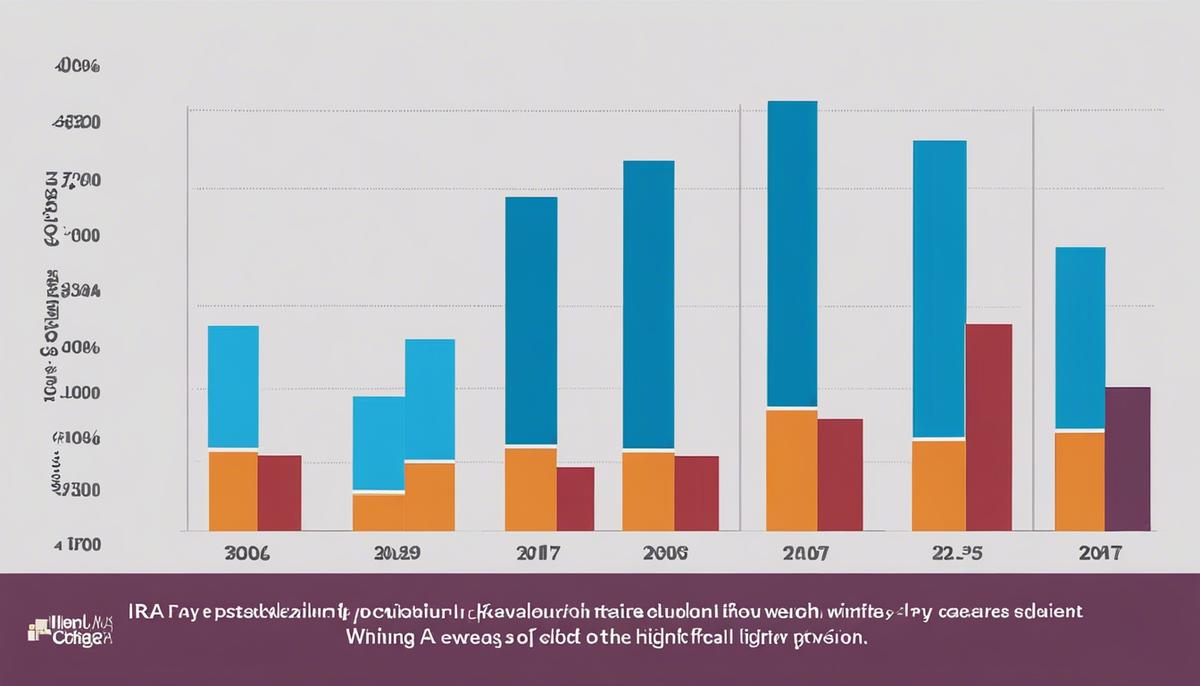Maximizing your 2024 IRA Contribution Limits
The financial landscape of retirement planning continues to evolve with each passing year. As we set our sights on 2024, it is of paramount importance to comprehend and evaluate the IRA (Individual Retirement Account) contribution limits set for that year. By delving into the specifics, this discourse illuminates essential aspects of these limits across traditional and Roth IRAs. Furthermore, it uncovers the pivotal influence of age and income on the span of your possible contribution. It does not halt at merely uncovering the surface level details, instead, this comprehensive guide also navigates you through the complexities of penalties for excess contributions, assisting in risk aversion when it comes to potentially overstepping your contribution boundaries.
Understanding IRA Contribution Limits
In this rapidly evolving business landscape, having an understanding of individual retirement accounts (IRAs) and their contribution limits is crucial.
As 2024 ushers in a new set of regulations, astute investors need to stay abreast of the changes to build and sustain a robust retirement portfolio. Just like any financial vehicle, the IRA contribution limits are not static. They evolve to reflect the economic environment, market dynamics, and government policies.
In 2024, the basic IRA contribution limits remain at $6,000 for those under the age of 50, while those aged 50 and above can contribute up to $7,000, thanks to the much-valued catch-up provision. This figure is expected to stay consistent, considering inflation trends, and policies aimed at encouraging more retirement savings. However, bear in mind that these limits apply to the total contributions made to all your traditional and Roth IRAs combined.
It cannot be overstated- regularly monitoring and adjusting investments in line with contribution limits is a powerful strategy for maximizing retirement savings. That said, contributing to an IRA account is not just about meeting the legal limits, but also about aligning with keen financial planning, market trends, and personal financial considerations. The true savvy entrepreneur is not just aware of the fundamentals but knows how to leverage this knowledge to create a financially secure future. Seize the power of IRA contributions, understand the limitations, and let your money work for you.

Effect of Age on 2024 IRA Contributions
As you navigate the landscape of investing in your retirement, the influence of age on your IRA contributions will play a pivotal role, particularly when you consider the 2024 landscape.
Two critical age thresholds will significantly impact your ability to amplify your retirement savings: age 50 and age 70½. Upon reaching the age of 50, individuals are allowed to make catch-up contributions, an opportunity not available to younger investors. This ingenious policy, revised for 2024, was primarily formulated to fortify the retirement savings of those nearing the retirement age but whose savings may be lagging.
Apart from the basic limit set for IRA contributions, those aged 50 and above can make additional contributions of $1000 annually, a trend that ascends in accordance with inflationary patterns. The advent of these catch-up provisions caters to the possibility of delayed financial planning, offering a wider window of opportunity to those who may have neglected their retirement savings earlier in their careers.
Influencing IRA contributions further is the age ceiling. As of 2020, the age cap of 70½ that previously restricted the ability of senior citizens to contribute to their traditional IRAs was expunged, a change that holds true for 2024. Consequently, individuals can make enduring contributions to their IRA accounts beyond this age, as long as they have an equivalent earned income. This tangible flexibility creates a refreshing enabler for diversification of investment portfolios, even into the advanced years. With shrewd navigation of these innovative trends and agile decision-making, familiarizing yourself with these contributions has the potential to propel your nest egg to new heights. Notably, age is more than just a number in the context of IRA contributions. It is, indeed, a powerful lever and opportunity.

Impact of Income on 2024 IRA Contribution Limits
When discussing the parameters that govern the Individual Retirement Accounts (IRAs), tax implications are imperative to consider. Notably, the income level plays a significant role in IRA contributions because it affects the deductibility of contributions for traditional IRAs and eligibility for Roth IRAs. In order to give this point a more granular understanding: individuals with higher income levels may encounter a phase-out period. During this phase-out, your ability to contribute to a Roth IRA decreases as your income increases. It’s crucial to plan accordingly, because exceeding these income levels can result in excess contributions, which are subject to penalties. Therefore, it’s important to stay within the bounds established for your specific scenario, whether in a high or low income bracket.
Since the inception of the IRA, the US government has always placed special emphasis on moderate and low-income earners. Rebates, known as Saver’s Credit, is especially beneficial to earners in these categories, practically functioning as a matching program for contributions to retirement savings. With Saver’s Credit, earners making contributions to their IRA are eligible for a tax credit of up to 50% of their contribution. By availing these advantages, users can boost their IRA and overall retirement portfolio.
Lastly, it’s important to note the different tax implications between Traditional and Roth IRAs. Traditional IRAs provide tax-deductible contributions and taxable withdrawals, while Roth IRAs provide contributions with after-tax dollars and tax-free withdrawals at retirement. Therefore, understanding your income level and its tax treatment can profoundly influence your IRA strategy. With a proactive approach and a solid understanding of your economic situation, you can make your income level work to your advantage.

Navigating Penalties for Excess Contributions
So, now that we’ve grappled with the fine print of IRA rules, let’s address the elephant in the room – what happens if you over-contribute in 2024?
For the adventurous entrepreneur, overstepping boundaries often becomes second nature. However, an excess contribution to your IRA account isn’t so easily admired by the IRS. A 6% excise tax is imposed annually as long as the excess contribution and associated earnings remain in the account. An oversight can quickly become a pricey pitfall of unnecessary expenditure.
Strategizing and swift action, however, can efficiently mitigate this financial pitfall. Ideally, excess contributions should be withdrawn by the due date of the individual’s tax return for the tax year. Note: this date includes extensions. By removing the excess amount and any earnings related to the excess contributions timely, the 6% excise tax can be sidestepped. Additionally, crucial to remember is any earnings need to be reported as income for the year they were earned – one element that doesn’t get an escape route.
Interestingly, the IRS also allows the option to apply the excess contribution to next year’s limit, provided the excess amounts are minimal and under the upcoming year’s limit. A savvy calculation by an entrepreneur’s trusted tax advisor is all that’s needed to choose the best method for correcting an over-contribution.
In the end, attentiveness and astute financial acumen remain the pillars of prosperous entrepreneurship. This can never be truer in the complex world of IRA contributions where minor slips can lead to financial repercussions that one may not have bargained for. So keep innovating, stay updated, and keep a vigilant oversight on those retirement investment avenues. With an ample dose of market knowledge and foresightedness, sailing smoothly in the turbulent tax seas becomes effortless.

Accumulating adequate knowledge about the 2024 IRA contribution limits might seem daunting at first. But with a comprehensive grasp of the nuances related to age and income impact, and a clear understanding of the penalties regarding excess contributions, it becomes significantly simplified. ARMED with this knowledge, you are well-equipped to tactfully and efficiently contribute to your IRA in 2024, maximizing your retirement savings while avoiding potential financial pitfalls. Embark on this journey of informed financial planning today to experience the peace of mind that comes with having a secure retirement strategy in place.


Leave a Reply